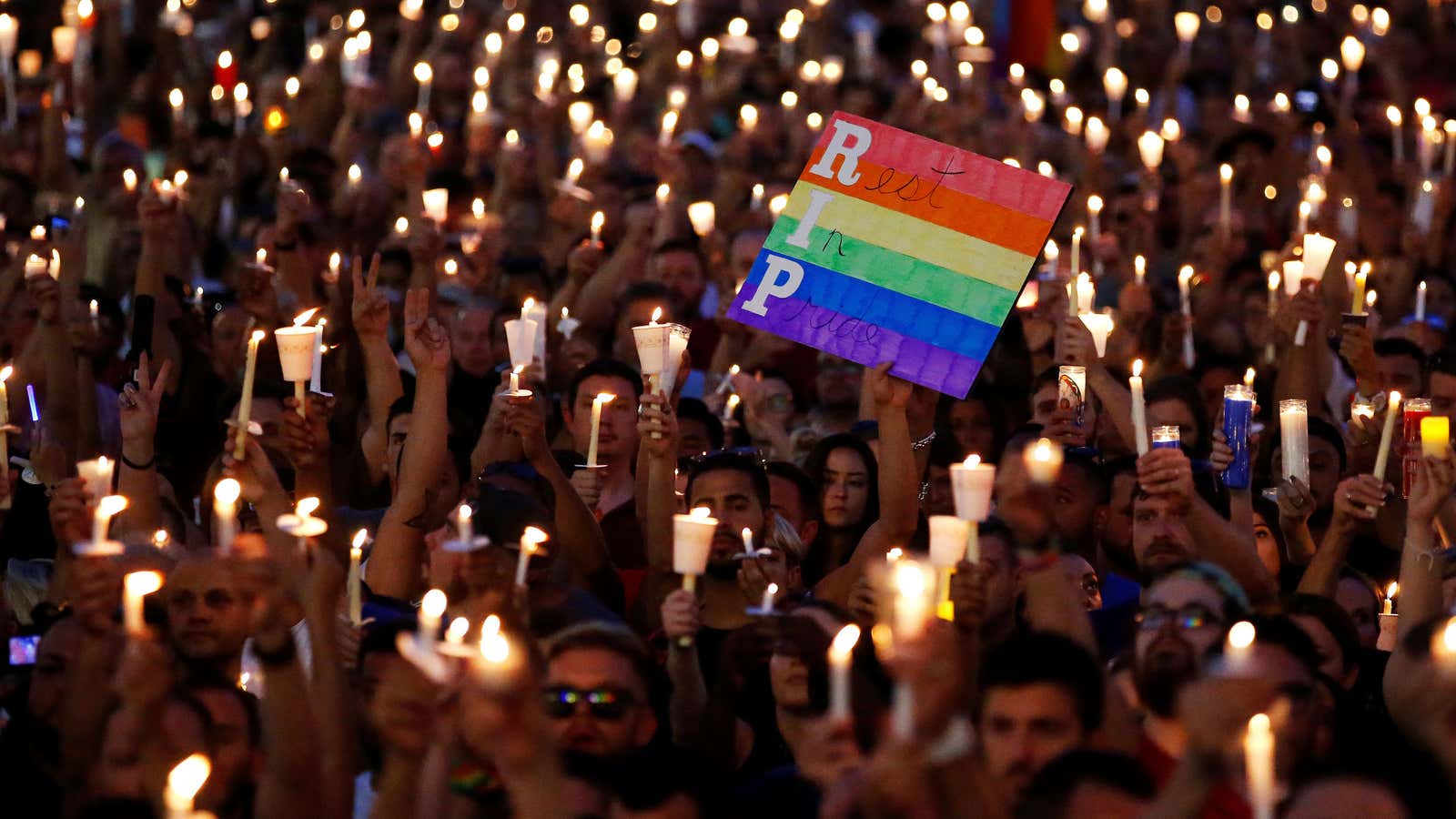In 1983, two years after the AIDS virus was first discovered in the United States, the Food and Drug Administration issued guidelines for gay men who wanted to donate blood. If they had had sex with other men at any time since 1977, they would be prohibited from donating blood indefinitely.
That policy lasted for nearly 40 years, and remained unchanged until six months ago. In December 2015, the FDA revised its guidelines to allow blood donations from gay men, as long as they hadn’t had sex with other men for one year.
Following the mass shooting at a gay nightclub in Orlando, Florida, last Sunday (June 12), which left 49 people dead and 53 wounded, potential blood donors lined up at collection centers. Many of those potential donors were gay, and due to conflicting reports in the news and social media, many believed the ban had been lifted.
The ban, however, was still in place. OneBlood, an organization that operates blood donation centers throughout Florida, tweeted on Sunday that the FDA rules were still in effect. Any man who’d had sex with another man within the past year would be turned away.
The day after the shooting, Congressional Democrats urged the FDA to remove the one-year restriction and allow gay men to donate blood, regardless of how sexually active they may be.
“We find it unacceptable that gay and bisexual men are banned from donating desperately needed blood in response to this tragedy,” four lawmakers wrote in a statement. They added that the new one-year rule “does not go far enough in ending an outdated policy that is medically and scientifically unwarranted and that perpetuates inaccurate stereotypes.”
In a protest at City Hall in New York City on Tuesday (June 14), Gay Men’s Health Crisis vice president Anthony Hayes echoed those sentiments, calling the one-year celibacy requirement “the same lifetime ban just dressed up differently in hopes that we would not notice.”
So far, the FDA is holding its ground. In a statement on Monday, the agency said lifting the 12-month rule isn’t supported by the available science.
A summary of that science can be found in the 25-page report released by the FDA when it updated its guidelines in December. That report, compiled by an interagency committee tasked with exploring “the feasibility of a data and science-driven policy change,” cited various studies. Among the findings:
- Computerized inventories have minimized the risk of infected blood making its way into hospitals.
- After Australia changed its blood donation policy for gay men from a lifetime ban to a one-year deferral, “there was no change in risk to the blood supply, defined by the number of HIV positive donations per year and the proportion of HIV-positive donors with male-to-male sex as a risk factor.”
- An analysis of more than half the blood in the national supply found that, in blood that was HIV-infected, the leading sources were donors who had had “sex with an HIV-positive partner” or had “a history of male-to-male sexual contact.” That finding was consistent with studies conducted in the early 1990s by the US Centers for Disease Control and Prevention.
- A 2014 study in Transfusion found that “the risk of HIV among MSM [men who have sex with men] is more than twenty-fold higher than that of men who have sex with multiple female partners and women who have sex with multiple male partners.”
- A survey of gay men found that they “view the current policy as discriminatory and stigmatizing, and that some individuals knowingly donate despite the deferral.” Most of the survey respondents (90%) thought the lifetime ban should change, and 59% said they “would comply with a change to a one-year deferral,” and refrain from donating if the one-year rule made them ineligible.
The committee determined that changing to the current one-year rule was safe, but that a complete lift of the ban would be too great a risk. ”Conservative calculations performed by FDA estimate that this approach could potentially be associated with an approximately four-fold increase in HIV transmissions resulting from blood transfusions each year,” the report said.
A frequently-cited alternative to a ban–using rapid HIV testing on all donated blood–was explored by the committee as well. The committee noted that blood from donors who’d recently been infected with HIV may not show HIV markers. To alleviate that issue, blood donors would have to show up to donation centers twice: once to get tested, and two weeks later to give blood. The report concludes that such a requirement “would add very significant logistic complexity to the blood donor system.”
There are also questions of how the ban affects the national blood supply. Prior to the FDA’s policy update, a report from UCLA Law estimated that removing the ban altogether would add 360,600 donors to the national pool, which would increase the national blood supply by 4%. And according to a report by the AABB–a national blood collection and transfusion organization–the total supply has decreased in recent years, falling by 12% between 2011 and 2013.
Despite that, the FDA said in its statement on Monday that “no one who needs blood is doing without it.” On a national level, the AABB report does indeed indicate that the supply levels are adequate. In 2013, 13.6 million units of blood were collected nationwide, according to the report, and 6.1 million units were used for transfusions in AABB member hospitals. (The Red Cross points out, however, that “although an estimated 38 percent of the U.S. population is eligible to donate blood at any given time, less than 10% of that eligible population actually do each year.”)
On Monday, the FDA said in its statement that it would continue to evaluate the donation policy as new research becomes available.




